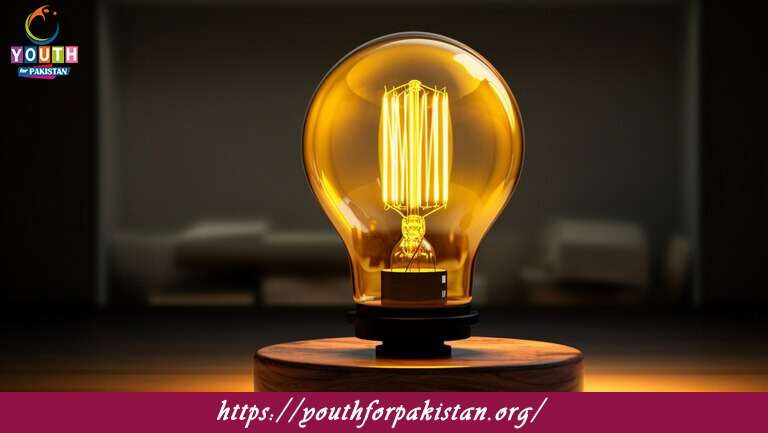10th Class Physics Chapter 14 MCQs with Answers

Explore the dynamic world of current electricity with these engaging MCQs. Topics include Ohm’s law, electrical circuits, and power consumption. Trending keywords like “current electricity MCQs for exams” and “electricity quiz for 10th class” make this a valuable resource.
Electric current is the flow of:
a) Electrons
b) Neutrons
c) Protons
d) Photons
The SI unit of electric current is:
a) Ampere
b) Volt
c) Ohm
d) Coulomb
The instrument used to measure electric current is called:
a) Voltmeter
b) Ammeter
c) Ohmmeter
d) Galvanometer
The electric current in a conductor is directly proportional to:
a) The resistance of the conductor
b) The voltage across the conductor
c) The length of the conductor
d) The cross-sectional area of the conductor
The relationship between voltage, current, and resistance in a circuit is given by:
a) Ohm’s law
b) Faraday’s law
c) Coulomb’s law
d) Gauss’s law
A material that allows electric charges to flow freely is called:
a) Insulator
b) Conductor
c) Semiconductor
d) Superconductor
The resistance of a conductor depends on its:
a) Length and cross-sectional area
b) Material and length
c) Material and cross-sectional area
d) Material, length, and cross-sectional area
The resistance of a conductor is measured in:
a) Amperes
b) Ohms
c) Volts
d) Coulombs
When the length of a conductor is halved, its resistance:
a) Halves
b) Doubles
c) Becomes four times
d) Becomes one-fourth
When the cross-sectional area of a conductor is doubled, its resistance:
a) Halves
b) Doubles
c) Becomes four times
d) Becomes one-fourth
The phenomenon in which the resistance of a conductor increases with the increase in temperature is called:
a) Conductivity
b) Resistance drift
c) Ohmic effect
d) Temperature coefficient of resistance
The resistance of an ideal conductor is:
a) Zero
b) Infinite
c) Constant
d) Variable
A 12 V battery is connected to a resistor of 4 Ω. What is the current flowing through the
resistor?
a) 3 A
b) 8 A
c) 48 A
d) 16 A
Kirchhoff’s first law deals with the conservation of:
a) Charge
b) Current
c) Energy
d) Mass
The total resistance of resistors in series is equal to:
a) The sum of their resistances
b) The product of their resistances
c) The difference of their resistances
d) None of the above
The total resistance of resistors in parallel is:
a) The sum of their resistances
b) The product of their resistances
c) The difference of their resistances
d) Inversely proportional to the sum of their resistances
The equivalent resistance of two resistors of equal resistance connected in series is:
a) Equal to their individual resistances
b) Half of their individual resistances
c) Double of their individual resistances
d) None of the above
The equivalent resistance of two resistors of equal resistance connected in parallel is:
a) Equal to their individual resistances
b) Half of their individual resistances
c) Double of their individual resistances
d) None of the above
A circuit contains a 12 V battery and three resistors of 2 Ω, 4 Ω, and 6 Ω connected in
series. What is the total resistance of the circuit?
a) 12 Ω
b) 4 Ω
c) 2 Ω
d) 8 Ω
A circuit contains a 9 V battery and three resistors of 3 Ω, 6 Ω, and 9 Ω connected in
parallel. What is the total resistance of the circuit?
a) 3 Ω
b) 6 Ω
c) 9 Ω
d) 2 Ω
The power dissipated in a resistor is given by:
a) P = V × I
b) P = V^2 / R
c) P = I^2 × R
d) All of the above
The SI unit of electric power is:
a) Watt
b) Joule
c) Volt
d) Coulomb
A 100 W bulb operates on a voltage of 220 V. What is the current flowing through the bulb?
a) 0.45 A
b) 0.55 A
c) 2.2 A
d) 4.5 A
An electric iron draws a current of 5 A when connected to a 220 V source. What is the power consumed by the iron?
a) 11 W
b) 110 W
c) 220 W
d) 1.1 kW
The potential difference across a resistor is 12 V, and the current flowing through it is 3
A. What is the resistance of the resistor?
a) 4 Ω
b) 6 Ω
c) 9 Ω
d) 36 Ω
Which material has the lowest resistance?
a) Copper
b) Aluminum
c) Silver
d) Iron
The specific resistance of a material depends on its:
a) Length
b) Cross-sectional area
c) Temperature
d) All of the above
The resistivity of a material is defined as the resistance of a cube of the material with sides:
a) 1 cm
b) 10 cm
c) 1 m
d) 10 m
The resistivity of a material is measured in:
a) Ohms
b) Volts
c) Amperes
d) Ohm-meters
Superconductors are materials that:
a) Have zero resistance at low temperatures
b) Have infinite resistance at low temperatures
5
c) Have zero resistance at high temperatures
d) Have infinite resistance at high temperatures
Which of the following materials is a good conductor of electricity?
a) Rubber
b) Glass
c) Wood
d) Copper
In a circuit, if the voltage remains constant and the resistance increases, the current will:
a) Increase
b) Decrease
c) Remain the same
d) Become zero
When a current flows through a conductor, the conductor becomes:
a) Warmer
b) Cooler
c) Unaffected
d) Magnetized
The potential difference across a conductor is directly proportional to the:
a) Current flowing through the conductor
b) Resistance of the conductor
c) Charge flowing through the conductor
d) Length of the conductor
An electric circuit is said to be open when:
a) Current is flowing through the circuit
b) There is a break in the circuit
c) The circuit is complete
d) None of the above
An electric circuit is said to be closed when:
a) Current is flowing through the circuit
b) There is a break in the circuit
c) The circuit is complete
d) None of the above
The total resistance of resistors in series is always:
a) Greater than the resistance of the largest resistor
b) Less than the resistance of the smallest resistor
c) Equal to the sum of their resistances
d) Equal to the product of their resistances
The total resistance of resistors in parallel is always:
a) Greater than the resistance of the largest resistor
b) Less than the resistance of the smallest resistor
c) Equal to the sum of their resistances
d) Equal to the product of their resistances
The drift velocity of charge carriers in a conductor is directly proportional to the:
a) Applied voltage
b) Cross-sectional area of the conductor
c) Current flowing through the conductor
d) Resistance of the conductor
When two resistors of resistances R1 and R2 are connected in parallel, the total resistance R is given by:
a) 1/R = 1/R1 + 1/R2
b) R = R1 + R2
c) R = R1 × R2
d) R = R1 / R2
When two resistors of resistances R1 and R2 are connected in series, the total resistance
R is given by:
a) R = R1 + R2
b) R = R1 × R2
c) R = R1 / R2
d) 1/R = 1/R1 + 1/R2
The resistance of a wire of length ‘L’ and resistivity ‘ρ’ is directly proportional to:
a) L
b) ρ
c) L^2
d) ρ^2
The resistivity of a wire of length ‘L’ and resistance ‘R’ is directly proportional to:
a) L
b) R
c) L^2
d) R^2
The resistivity of a material is defined as the resistance of a wire of length ‘L’ and cross-
sectional area ‘A’ with:
a) ρ = L / A
b) ρ = L × A
c) ρ = A / L
d) ρ = R × A / L
The current passing through a conductor is inversely proportional to:
a) The resistance of the conductor
b) The voltage across the conductor
c) The length of the conductor
d) The cross-sectional area of the conductor
The process of converting electrical energy into other forms of energy is known as:
a) Electric current
b) Electric power
c) Electric energy
d) Electrical conversion
The efficiency of an electrical device is defined as the ratio of:
a) Power output to power input
b) Power input to power output
c) Voltage output to voltage input
d) Voltage input to voltage output
The power rating of an electrical device is the:
a) Maximum power it can handle
b) Minimum power it requires
c) Average power it consumes
d) Instantaneous power it produces
The power consumed by a 100 W bulb in 1 hour is:
a) 100 W
b) 100 Wh
c) 100 J
d) 100 kWh
The power consumed by a 1 kW appliance in 1 hour is:
a) 1 W
b) 1 Wh
c) 1 J
d) 1 kWh
Which of the following materials is the best conductor of electricity?
a) Copper
b) Gold
c) Silver
d) Aluminum
An ammeter is always connected in:
a) Series
b) Parallel
c) Series-parallel combination
d) None of the above
A voltmeter is always connected in:
a) Series
b) Parallel
c) Series-parallel combination
d) None of the above
In a parallel circuit, the potential difference across each resistor is:
a) Equal to the total potential difference
b) Different and directly proportional to its resistance
c) Different and inversely proportional to its resistance
d) Zero
The electric current in a series circuit is the same through:
a) Each resistor
b) Each branch
c) Each junction
d) None of the above
When a resistor is connected across the terminals of a battery, the current flows:
a) From positive to negative terminal of the battery
b) From negative to positive terminal of the battery
c) Both ways, but it is random
d) None of the above
The reciprocal of resistance is called:
a) Conductance
b) Current
c) Voltage
d) Capacitance
A circuit contains a 9 V battery and three resistors of 3 Ω, 6 Ω, and 9 Ω connected in series. What is the total current flowing through the circuit?
a) 1 A
b) 3 A
c) 6 A
d) 9 A
A circuit contains a 6 V battery and three resistors of 2 Ω, 4 Ω, and 6 Ω connected in
parallel. What is the total current flowing through the circuit?
a) 1 A
b) 2 A
c) 3 A
d) 6 A
The electric current in a conductor is directly proportional to the:
a) Cross-sectional area of the conductor
b) Length of the conductor
c) Applied voltage across the conductor
d) Charge flowing through the conductor
If you are interested to enhance your knowledge regarding Physics, Chemistry, Biology, and Computer please click on the link of each category, you will be redirected to dedicated website for each category.





